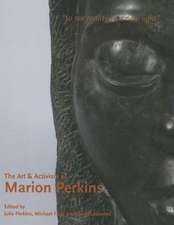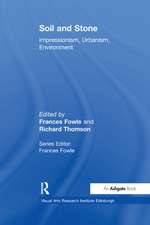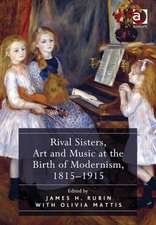Neo-Impressionism and Anarchism in Fin-de-Siècle France: Painting, Politics and Landscape
Autor Robyn Roslaken Limba Engleză Paperback – 9 sep 2016
| Toate formatele și edițiile | Preț | Express |
|---|---|---|
| Paperback (1) | 469.34 lei 6-8 săpt. | |
| Taylor & Francis – 9 sep 2016 | 469.34 lei 6-8 săpt. | |
| Hardback (1) | 1115.51 lei 6-8 săpt. | |
| Taylor & Francis – iun 2007 | 1115.51 lei 6-8 săpt. |
Preț: 469.34 lei
Nou
Puncte Express: 704
Preț estimativ în valută:
89.83€ • 93.43$ • 75.28£
89.83€ • 93.43$ • 75.28£
Carte tipărită la comandă
Livrare economică 13-27 martie
Preluare comenzi: 021 569.72.76
Specificații
ISBN-13: 9781138248397
ISBN-10: 1138248398
Pagini: 232
Dimensiuni: 156 x 234 x 18 mm
Greutate: 0.45 kg
Ediția:1
Editura: Taylor & Francis
Colecția Routledge
Locul publicării:Oxford, United Kingdom
ISBN-10: 1138248398
Pagini: 232
Dimensiuni: 156 x 234 x 18 mm
Greutate: 0.45 kg
Ediția:1
Editura: Taylor & Francis
Colecția Routledge
Locul publicării:Oxford, United Kingdom
Cuprins
Contents: Introduction; Neo-impressionism, anarchism and the 'republic of science and reason'; Anarchists, artists and artisans; Representing Paris: streets, bridges and petits boulevards; Anarchist geography and the idea of landscape; 'Dirty and radiant, depressing and cheerful:' the neo-impressionist suburbs; Anarchists and tourists in Provence; Conclusion: looking forward, looking back: neo-impressionism around 1900; Bibliography; Index.
Notă biografică
Robyn Roslak is Associate Professor of Art History at the University of Minnesota, Duluth, USA.
Recenzii
'... a brilliant and compelling contribution to art history and anarchist studies. Traversing the fields of art history, political science, history, ecology, and geography, Roslak has effectively rewritten the history of one of the 19th-century’s most important art movements.' Allan Antliff, University of Victoria, Canada
’Incorporating theories of cultural geography and tourism studies, unearthing little-discussed primary material, and presenting tightly unified argument, Robyn Roslak's Neo-Impressionism and Anarchism in Fin-de-Siècle France is essential reading for any scholar of Neo-Impressionism.’ Oxford Art Journal
’Robyn Roslak’s book is a welcome and illuminating study, adding to the still somewhat thin literature on neo-Impressionism.’ Art History
'... [a] ground-breaking study. ... Roslak’s book constitutes the first synthetic study of Neo-Impressionism to consider the anarchist import of this movement, free of the distorting lens of traditional Marxism.' H-France
’Incorporating theories of cultural geography and tourism studies, unearthing little-discussed primary material, and presenting tightly unified argument, Robyn Roslak's Neo-Impressionism and Anarchism in Fin-de-Siècle France is essential reading for any scholar of Neo-Impressionism.’ Oxford Art Journal
’Robyn Roslak’s book is a welcome and illuminating study, adding to the still somewhat thin literature on neo-Impressionism.’ Art History
'... [a] ground-breaking study. ... Roslak’s book constitutes the first synthetic study of Neo-Impressionism to consider the anarchist import of this movement, free of the distorting lens of traditional Marxism.' H-France
Descriere
Neo-Impressionism and Anarchism in Fin-de-Siècle France examines for the first time the close and complex relationship between neo-impressionist landscapes and cityscapes and the anarchist sympathies of the movement's artists. It focuses especially on paintings produced between 1886 and 1905 by Paul Signac and Maximilien Luce, relating their pointillist technique and their subjects to the social, scientific and aesthetic ideals of the anarchist theoreticians Elisée Reclus, Pierre Kropotkin and Jean Grave.

















